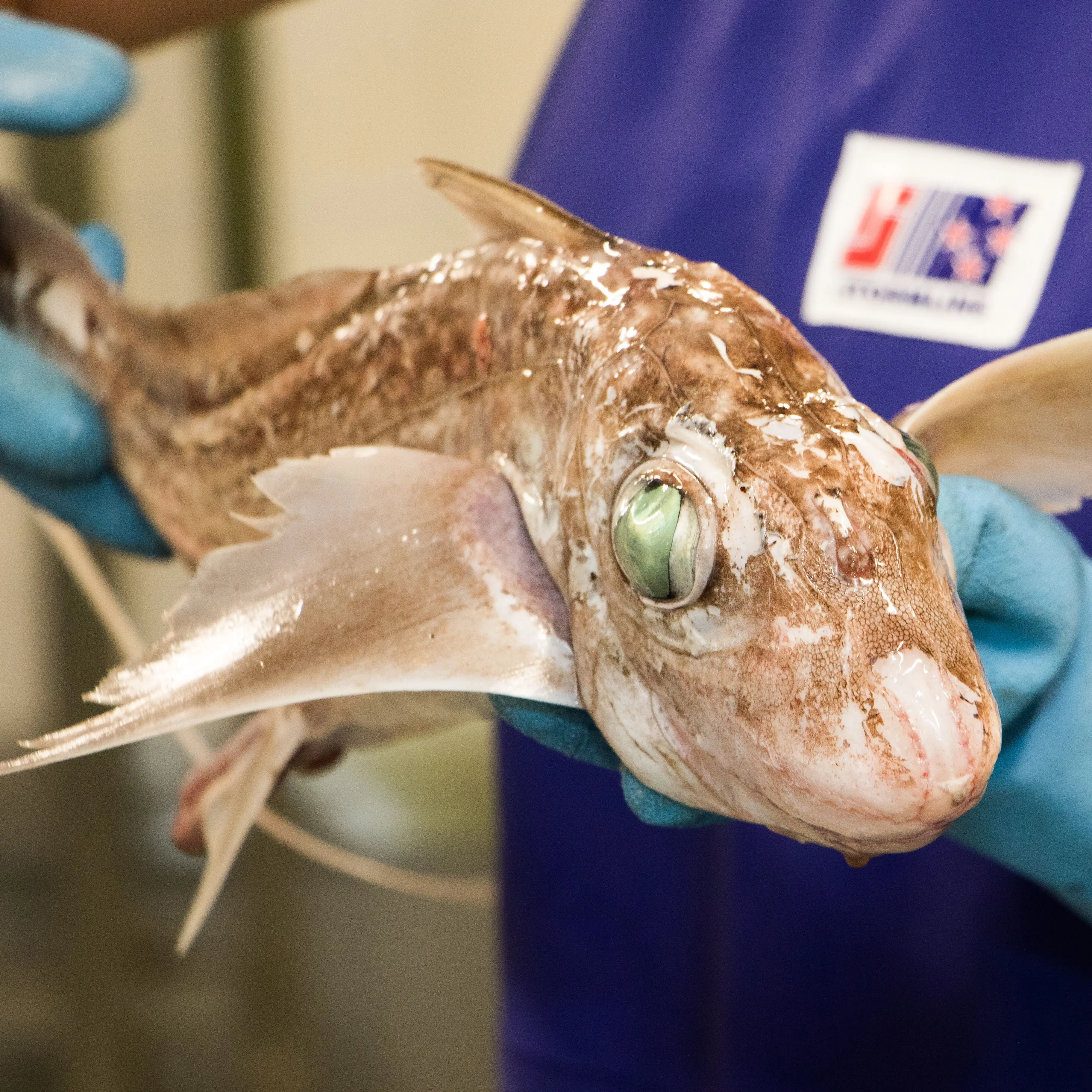Ghost shark
Haunting the deep sea for 300 million years
Ghost sharks – also known as chimaeras or ratfish – are distant cousins of sharks and rays, separated by a whopping 300 million years. Creatures more ancient than dinosaurs, they glide through the darkness of the deep sea with wing-like fins and long tail filaments, their bodies iridescent and eyes luminous. Most of their lives are still a mystery to us.
Two species we encountered frequently in our deep-sea tows on this voyage were the inventively named pale ghost shark and dark ghost shark. Pale ghost sharks, Hydrolagus bemisi, were an undescribed species for many decades, even though they were commercially important for fisheries. “Undescribed” means that people know the species exists, but it is yet to be officially recognised in a scientific paper, with all its identifying characteristics so that it is unmistakable.
Sharks by name but not quite by nature, both species are a lot smaller than the familiar great whites and hammerheads. Their maximum size is 70cm, about the height of a desk. Add on 20cm for the long tail filament and they are still under a metre.
Right: Pale ghost shark.

Above: I meet a very small ghost shark!
It is extremely simple to distinguish between the two species. Pale ghost sharks are a golden brown on top, and pale below. Dark ghost sharks, Hydrolagus novaezealandiae, are a dappled dark brown, with white spots and bands, and are also paler on their bellies. Both are iridescent and beautiful, and are known only from New Zealand. However, this doesn’t mean that they might not live elsewhere – we know more about the surface of Mars than we do about the deep sea.

Ghost sharks are part of the Chondrichthys class of fishes with cartilaginous skeletons which include sharks, rays skates and chimaeras. They have mysterious sex lives where the female has two sets of reproductive organs, and males have unique features. Above is the males’ forehead sex organ that has hooks that they may use to clasp onto the fins of the female during mating. Females also store sperm which works in their favour in the deep sea where food and mates can be hard to come by.


